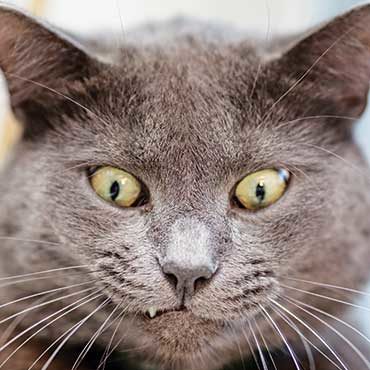

How Socially Smart is Your Cat?
To find out whether your cat can pass some common tests of social intelligence, try these simplified experiments from Science at home. Make sure your cat is calm and relaxed before you start.
How independent is your cat?
HOW TO TEST
Sit in a room with your cat. Ignore them, sitting quietly or paying attention to a book or phone for 2 minutes. Then, try to interact with your cat—call them to you. If they come, pet and talk to them.
WHAT IT MEANS
Highly social cats immediately come to you when you begin to pay attention to them, whereas more independent cats keep their distance.
THE LESSON FOR OWNERS
If your cat tends to be antisocial, try spending more time with them. Like humans, cats can become more friendly if we make an extra effort.
Is your cat tuned into your emotions?
HOW TO TEST
Take your cat into a room with a potentially frightening object they have never seen before, like a robot vacuum. Sit calmly on the floor with your cat, then make friends with the object, saying “what a nice vacuum” in a calm, friendly voice. Approach the object and touch it.
WHAT IT MEANS
If your cat is initially freaked out but calms down—and even approaches the object—after you make friends with it, your cat likely can pick up on your emotional cues and alter their behaviour in kind.
THE LESSON FOR OWNERS
Your mood can influence your cat’s mood. So, if you’re calm and chipper at the vet’s office, they may stay calm as well.
Does your cat know its name?
HOW TO TEST
When your cat is calm, say four words of about the same length and accent as their name, waiting 15 seconds between words. Then, say their name.
WHAT IT MEANS
If your cat gradually reacts less to each random word, but responds to their name by turning their head toward you, rotating their ears, or moving their tail, they probably “know” their name.
THE LESSON FOR OWNERS
It may be easier to train cats that know their name, for example, when using verbal commands like, “Sit!”
Does your cat prefer you– or food?
HOW TO TEST
Pick a few items you think your cat may enjoy, such as treats and toys. Set them on the ground, sit nearby, and see where your cat lingers.
WHAT IT MEANS
Your cat prefers whatever they spend the most time with. But they may just be hungry. Repeat the experiment in varied situations to be sure of their preferences.
THE LESSON FOR OWNERS
If your cat prefers you to toys or treats, the best incentive when training or rewarding them may be your presence.
This article originally appeared in the award-winning Modern Cat magazine. Subscribe today!
Join the newsletter and never miss out on cat content again!
"*" indicates required fields
By clicking the arrow, you agree to our web Terms of Use and Privacy & Cookie Policy. Easy unsubscribe links are provided in every email.










